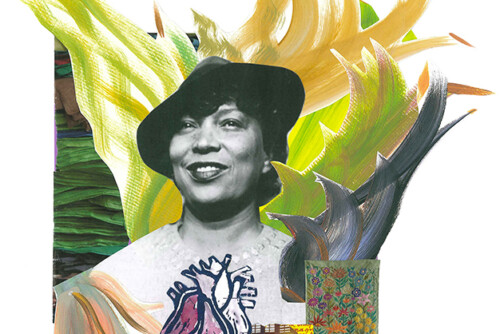Nonetheless, there was a change in the structure of paid domestic work and in the people who entered this field. Early in the twentieth century, U.S. domestic workers were often young and single, usually Irish or Scandinavian immigrant women, who performed “live in” domestic work in another woman’s home. But by the middle of the century, domestic workers were more likely to be married women of color, such as African American women and Latinas, who lived with their own families and who pioneered the concept of paid housework as “day work.” 1 This shift in the demographics of domestic workers was primarily due to the growth of other employment opportunities for white immigrant or working class women in factory or white-collar employment, while women of color were trapped by occupational segregation and discrimination into domestic or agricultural work. Technology had allowed more women to make use of part-time, non-resident domestic workers for the remaining “heavy” tasks such as laundry.
For at least two reasons the demographics of domestic workers changed once again, starting in the 1960s. First, affirmative action regulations opened up white collar and professional work to women of color, and they left the field of domestic work when they could. And, second, at the same time, shifts in the U.S. economy and social norms led to the decline of the single breadwinner model and made two income families the norm. Women were more likely to participate in the traditional labor force, creating more need for domestic or carework, while at the same time the supply of household workers decreased. On the other hand, today’s globalization makes economic survival difficult in poor countries, while affluent countries have a strong demand for low wage domestic labor, resulting in the “feminization of migration.” Rhacel Parreñas has described the result as an international division of reproductive labor, transferring white women’s domestic and carework labor in developed countries to women of color who migrate from developing nations as contract workers or undocumented workers. 2
In The Global Dimensions of Gender and Carework, Mary Zimmerman, Jacqueline Litt, and I describe how migration and citizenship have shaped who performs paid and unpaid carework and under what conditions it is done. 3 We see three outcomes of migration. First, there is fluidity between paid and unpaid carework over a woman’s life course and across geographic space. For example, since paid and unpaid carework are not mutually exclusive, women who migrate for paid work continue to nurture their families at home even while working overseas. Furthermore, stringent regulations on paid carework allow women to migrate for a limited time period, so at some point they must return to their home countries and perform unpaid carework.
Second, migrant careworkers often have only limited citizenship rights and experience considerable surveillance by governments and employers. For some migrants, paid work is prohibited and few citizenship rights are available. Other paid careworkers are recruited by employment agencies in developed or newly industrializing countries from a limited set of developing countries usually defined by immigration laws. For example, Taiwan’s 1992 Employment Service Law limits foreign workers to three unskilled labor occupations—domestic workers, caregivers, and construction or manufacturing workers—as well as six white-collar job categories. Since only workers from the Philippines, Thailand, Indonesia, Malaysia, and Vietnam are eligible for these unskilled jobs, there is an implicit association between perception of skill and race or nationality. 4 In other words, racial and ethnic occupational segregation and stereotyping are fostered by the Taiwanese government’s immigration restrictions on domestic workers and jobs become racialized. Once women arrive to work under these temporary labor contracts, they are constantly surveilled—their passports are often confiscated, they are required to undergo regular health and pregnancy tests, prohibited from marrying while employed, are given limited opportunities to get out of the house and socialize with other careworkers, and their pay is postponed—all of which limit their substantive rights as citizens.
- Christine E. Bose, Women in 1900: Gateway to the Political Economy of the 20th Century (Philadelphia: Temple University Press, 2001).[↑]
- Rhacel Salazar Parreñas, “Migrant Filipina Domestic Workers and the International Division of Reproductive Labor,” Gender & Society 14.4 (2000): 560-580.[↑]
- Mary K. Zimmerman, Jacqueline S. Litt, and Christine E. Bose, eds., Global Dimensions of Gender and Carework (Palo Alto, CA: Stanford University Press, 2006).[↑]
- Shu-Ju Ada Cheng, “Rethinking the Globalization of Domestic Service: Foreign Domestics, State Control, and the Politics of Identity in Taiwan.” Gender & Society 17.2 (2003): 166-186.[↑]



